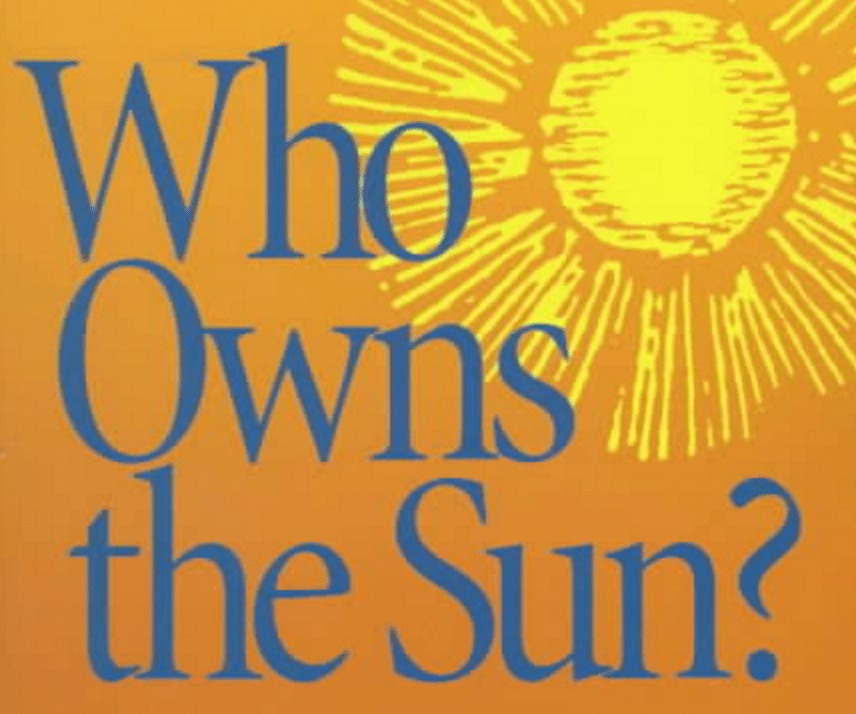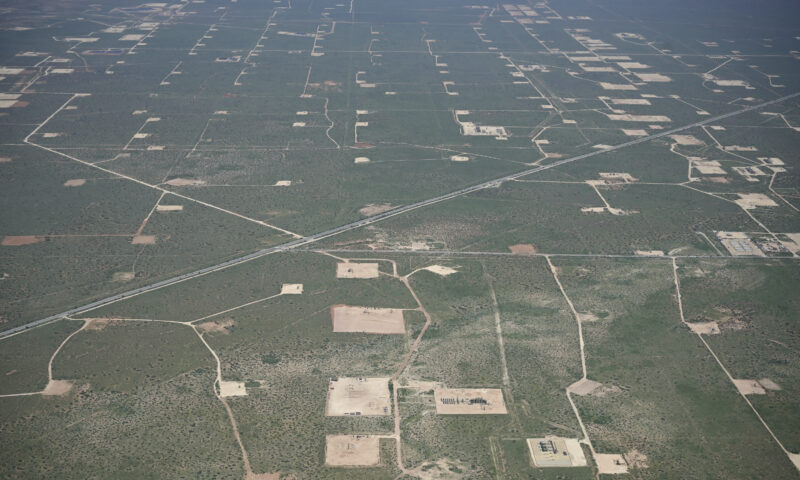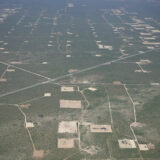Labor & Economy
Safety, Health and the Sun: The Long Run with Dan Berman
Dan Berman is a Davis, California-based author, researcher and teacher with a wry sense of humor and deep wisdom regarding labor union and social justice activism for healthy workplaces.

Dan Berman is a Davis, California-based author, researcher and teacher with a wry sense of humor and deep wisdom regarding labor union and social justice activism for healthy workplaces. He first started writing and organizing in 1969. Berman’s book Death on the Job: Occupational Health and Safety Struggles in the United States (1978) documents the diverse movements to end workplace injuries and fatalities. He is writing a sequel.
Berman went on to help spark the Council for Occupational Safety and Health (COSH) movement—union-based committees on occupational safety and health around the U.S. Dozens of COSH groups are still active today, and their work with unions and proto-union groups like Workers’ Centers around the country has helped keep the activism alive during a generation of almost endless capitalist counter-offensive.
Later, Berman and John T. O’Connor co-wrote Who Owns the Sun?: People, Politics, and the Struggle for a Solar Economy (1996). The subject matter remains timely for both labor and environmentalists engaged against global warming. Converting to a renewable energy system and away from dirty coal and oil is no luxury but a necessity in 2016. The question of jobs and the worsening planetary ecological crisis, according to him, are two sides of the same coin.
Cooperative relations between labor and the environmental movements among and between nations are urgent, an issue close to Berman’s heart. “Solidarity matters” is more than a phrase for him. In a phone interview with Berman, we spoke about worker health and safety in terms of making justice a central feature of the economy and ecology.
Capital & Main: How has worker safety changed since your 1978 book Death on the Job?
Dan Berman: Companies since the 1970s have largely outsourced the union jobs which caused so many worker deaths and injuries, or moved them to the non-union south and overseas. A corporate counter-offensive against organized labor in the private sector begun in the 1970s has radically reduced union density, and weakened their political power to advocate for better worker health and safety standards. Still, major victories such as the banning of tetraethyl lead to raise the octane level in gasoline have saved lives and cut illness at workplaces and the general population since DOTJ was published. Asbestos usage is down 99 percent since the mid-1970s. It was the internationally known asbestos research published by Dr. Irving J. Selikoff, a medical researcher at Mt. Sinai Medical Center, who in the 1960s, using data from the Asbestos Workers’ pension fund—smashed the corporate monopoly on information about the lethal character of asbestos. Crews of brilliant lawyers cost the asbestos industry scores of billions and drove those companies out of business with their third-party lawsuits. That led to a de-facto ban on asbestos in the U.S. Over 45 countries have banned asbestos outright. The number of workers killed from explosions, amputations, and crashes has fallen from 14,000 to 4,000, if official figures are to be believed.

Capital &Main: What was the workplace health and safety situation prior to the birth of the federal Occupational Safety & Health Administration—with strong support from unions in oil, steel, asbestos, and the auto industries allied to Ralph Nader and his supporters, which began enforcement in April 1971, under President Richard Nixon?
Berman: There was no national mechanism to respond to safety problems on the job. Several states were responsive. But most worker safety programs statewide were very weak. California, Pennsylvania, and Massachusetts were three partial exceptions to this rule with better workplace safety oversight. OSHA’s high point was 1978-80 under President Jimmy Carter. Now, OSHA after 30-plus years of talk about a standard for silica dust present in sand and rocks, and emitted as workers blast, clean and cut materials such as brick, concrete and tile, recently issued that standard. A corporate-backed lawsuit to jam up the process followed almost immediately.
Capital &Main: What are strengths and weaknesses of U.S. unions’ approach to environmental and energy issues?
Berman: Union members’ involvement in workplace safety improvements that ameliorate water and air quality for the entire community is crucial. However, such activism triggers worker fear of pushing employers too much. The constant technological pressure and the power of companies to move production outside the U.S. weakens unions’ leverage to advocate for better health and safety standards. Capital flight to Mexico or China is a very real threat, but just as bad is the job-killing impact of new technology and the free market “über alles” philosophy behind them. Even during OSHA’s salad days in the late 1970s, Charles Schultze and Bert Lance, President Carter’s top economic advisors, wrote him to propose “totally eliminating most safety regulations and replacing them with some form of economic incentives…” Our top elected leaders, except for a certain senator from Vermont, are true believers in a kind of capitalist totalitarianism. They cannot conceive of any other way to run things.
Capital &Main: In Who Owns the Sun?, can you share what your co-author and you write about labor unions and environmentalists?
Berman: The late Tony Mazzocchi, a top official in the Oil, Chemical and Atomic Workers Union, emphasized the issue of a “just transition” for workers who lose their jobs due to environmental regulations. In this way, the displaced workers would receive “full-income support” as they shift to new careers. Such a labor-environmental collaboration rarely goes beyond the rhetoric, since workers have no human right to either income or jobs. Meanwhile, businesses use automation and mechanization to eliminate jobs. To cite an extreme example, the number of working coal miners has declined from 862,000 in 1923 to 68,000 in 2014. Remember the Springsteen line: “Those jobs are going boys and they ain’t coming back….” He wrote that song over 30 years ago. Still, the number of coal miners killed on the job (without addressing black lung and other work-related diseases) has crashed from over 3,200 in 1907 to 16 in 2015. This is a stunning improvement. Now, coal miners on China and India are taking the hits for what we import. Society has to find better things for people to do than mine coal. Now’s the time to reignite the push for a shorter work-week and a longer vacations. Maybe it’s time for the labor movement to rewrite that line from “Eight-hour Day” song in the 1880s: “Eight hours for work, eight hours for rest, and eight hours for what we will.”
Capital &Main: Compare us with other countries—are they getting better while we are not?
Berman: Germany and France have superior working conditions generally, partly because of their shorter working hours, and because in Sweden 80 percent of the people belong to labor unions, compared to 11 percent in the U.S. After years of agitation and organizing, Quebec shut down its asbestos mines, which had made Canada the world’s main supplier of asbestos. Currently, Russia mines half the world’s asbestos, and its chief customers are China and India, guaranteeing a giant new epidemic of asbestos death for the next 50 years in all three countries.
Capital &Main: What’s significant about collective local and global solidarity movements to improve worker safety?
Berman: It’s very important. Companies are pursuing a race to the bottom, scouring the globe in pursuit of cheap production sites with low pay and weak environmental oversight. Apple, which began in Silicon Valley, has outsourced assembly work to China, where over a million workers at Foxconn, owned by Taiwanese capitalists, assemble the iPhone and other gadgets, triggering labor protests in the wake of suicides and suicide attempts as well as the death of one employee forced to work 34 hours in a row. Solidarity work with those exploited workers in China, and others such as garment workers in Bangladesh, is vital when capital is mobile and labor is much less so.
Capital &Main: Why does government enforcement of worker safety rules lack ample funding?
Berman: Political action groups such as American Legislative Exchange Council (ALEC) and U.S. Chamber of Commerce are effective in promoting a pro-business government agenda. The Koch Brothers are also bankrolling anti-worker campaigns which aim to kill New Deal laws and shove the U.S. social system back to the 1920s or the 1890s. For instance, an ALEC-sponsored campaign has convinced the Oklahoma legislature to follow the lead of Texas and make workers’ compensation benefits optional for injured workers. At some point capital will run out of cheap places “to nestle everywhere, to settle everywhere…over the whole surface of the globe,” as Marx and Engels wrote in 1848.
Capital &Main: What needs to happen next to strengthen occupational health and safety for workers, and the environment that they and their families and friends rely upon?
Berman: We need to provide public information, compensation for the workplace victims, humiliation of and incarceration for the bad actors against people and nature. Judges and juries need to start putting those responsible for workplace fatalities and environmental crimes in prison, as they have done in Bangladesh and Italy. That is unthinkable in today’s United States.

-

 Latest NewsDecember 8, 2025
Latest NewsDecember 8, 2025This L.A. Museum Is Standing Up to Trump’s Whitewashing, Vowing to ‘Scrub Nothing’
-

 Striking BackDecember 4, 2025
Striking BackDecember 4, 2025Home Care Workers Are Losing Minimum Wage Protections — and Fighting Back
-

 The SlickDecember 2, 2025
The SlickDecember 2, 2025Utility Asks New Mexico for ‘Zero Emission’ Status for Gas-Fired Power Plant
-

 Dirty MoneyDecember 3, 2025
Dirty MoneyDecember 3, 2025Trump’s Anti-Climate Policies Are Driving Up Insurance Costs for Homeowners, Say Experts
-

 Child FarmworkersDecember 5, 2025
Child FarmworkersDecember 5, 2025To Protect Underage Farmworkers, California Expands Oversight of Field Conditions
-

 Column - State of InequalityDecember 4, 2025
Column - State of InequalityDecember 4, 2025Can California Claw Back Some Medi-Cal Care?
-

 Latest NewsDecember 10, 2025
Latest NewsDecember 10, 2025Capital & Main, L.A. Times Win Sidney Award for Reporting on Child Farmworkers
-

 StrandedDecember 9, 2025
StrandedDecember 9, 2025Giving Up on the Dream: Asylum Seekers Try Other Options in Mexico

